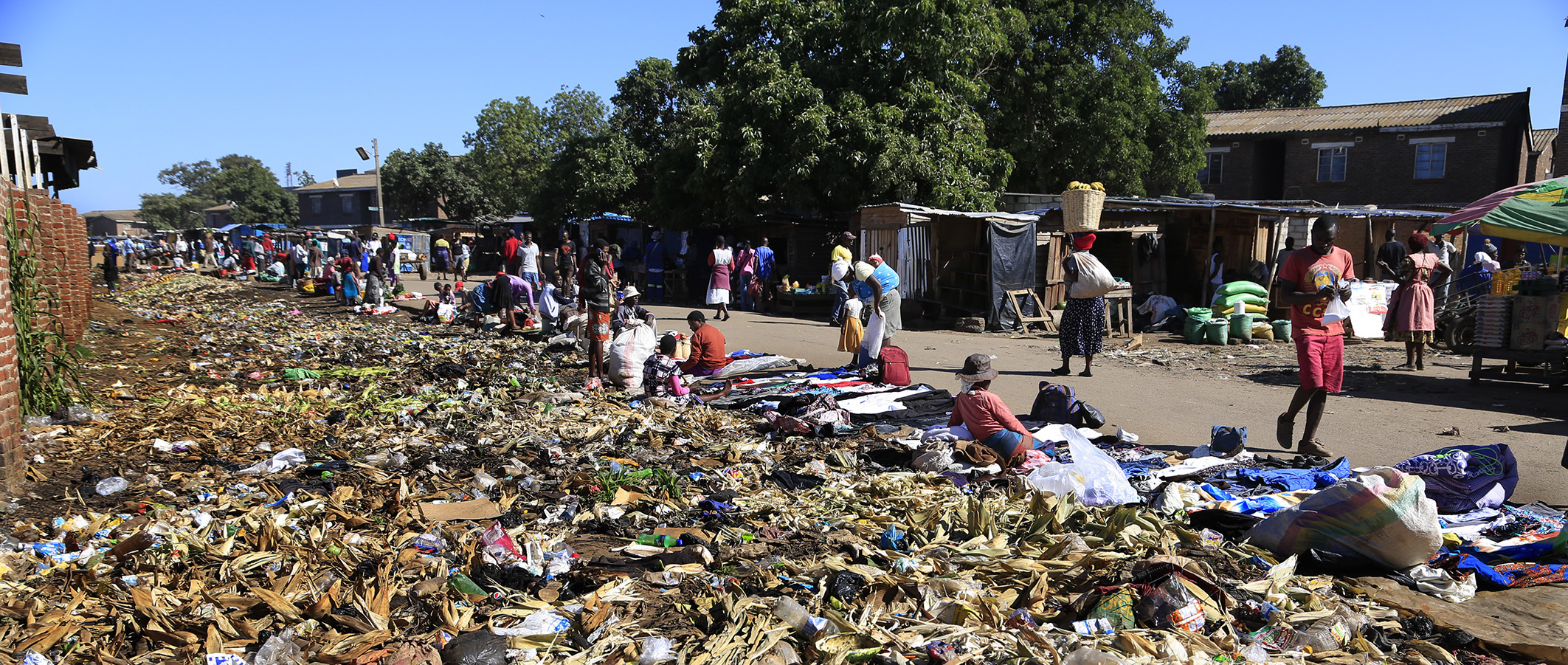The impact of Covid-19 has been much more catastrophic on ghetto youth than any other group of young people in Zimbabwe. It has not only disrupted the flow of economic activity and their sources of livelihood, but destroyed their confidence and hope for upward social mobility.
 A man pulls a cart carrying used vehicle tyres for resale in an industrial area in Harare, Zimbabwe. (Photo: EPA-EFE / Aaron Ufumeli)
A man pulls a cart carrying used vehicle tyres for resale in an industrial area in Harare, Zimbabwe. (Photo: EPA-EFE / Aaron Ufumeli)
The perennial nature of Zimbabwe’s economic crisis has, over the years, perpetuated a toxic culture of apathy, pessimism, and despondency among the youth. It is appalling to realise that more young people are now committing suicide, succumbing to drug and substance abuse and prostitution than ever before.
Although this owes much to the heavy yoke of prolonged poverty, it is evident that an infectious stress is being recklessly nursed by these young people with no solutions or way forward.
A closer look at Zimbabwean history shows us that however we define a crisis, for the past half-century at least there has been crisis after crisis, from the crisis under Gukurahundi, the crisis in the 1990s, the crisis after land reform, or the crisis following the coup and the pandemic.
It is difficult, if not impossible, to build meaningful channels through which the government and allies of all ages can foster a response, recovery and resilience that ensures that the odds do not stay stacked against young people.
But who are these ghetto youth in Zimbabwe and what really inhibits their upward mobility more than any other group of young people?
Typically, this group covers ordinary young men and women aged between 15 and 26 who reside in low-income, high-density areas like Mbare in Harare, Gaza in Chipinge, and Dombotombo in Marondera, to mention but a few. Their thoughts are concentrated more on the immediately pressing concerns of everyday life, in which they queue for everything, be it water, bread, or mealie meal. Most are not in school and are usually unemployed.
 A girl without a face mask begs from passing motorists in Harare, Zimbabwe, 25 September 2020. A relaxation of the Covid-19 lockdown restrictions resulted in an influx of children begging in the streets. (Photo: EPA-EFE / Aaron Ufumeli)
A girl without a face mask begs from passing motorists in Harare, Zimbabwe, 25 September 2020. A relaxation of the Covid-19 lockdown restrictions resulted in an influx of children begging in the streets. (Photo: EPA-EFE / Aaron Ufumeli)
With few connections and contempt for joblessness, they subsist through the “kukiya kiya” economy of informal trade which allows them to provide for their families.
Many of them do not have the luxury of choice to work from home. Their street hustle, “kungwavha ngwavha”, is real, with a configuration of practices that strongly depend on in-person interaction to buy and sell their goods. Their neighbourhoods are densely populated, and it is very difficult for them to practise social distancing. Their informal trade does not generate enough income for them to stock up their pantries during lockdowns or pay their hospital bills in the event of illness.
Their capacity to save is stifled by a vicious tangle of concentrated poverty, diseases, and a burdensome extended family dependency syndrome. They have no insurance whatsoever and cannot meet unexpected cost of living expenses. Their interpretation of economic hardship is worlds apart from that of their privileged counterparts, the “masaladi”, those who live in affluent suburbs like Borrowdale Brooke in Harare, Pelandaba in Bulawayo and Murambi in Mutare, to mention but a few.
These high-income folks generally have rich daddies, “mbingaz”, and privileged backgrounds and are usually politically and economically connected. Their thoughts are less concentrated on the street hustle, where the next mouthful of food will come from or where they will find shelter. They are usually signed up for medical insurance and can afford to stock up their pantries during lockdowns.
 Vendors sell produce at a market in Mbare, Harare. (Photo: EPA-EFE / Aaron Ufumeli)
Vendors sell produce at a market in Mbare, Harare. (Photo: EPA-EFE / Aaron Ufumeli)
In the face of these challenges, it is astonishing how government politicians choose to turn a blind eye to the obvious issues that they were elected to address. It is high time to encourage both the government and private players to invest in human capital accumulation and service delivery in the ghettos.
Understanding and fixing our inner cities amid this Covid-19 pandemic should be a national priority. It is formidable and depressing and seemingly hopeless for so much of the time, but we must start somewhere.
Many young people are very discouraged and sceptical over whether the current generation can be saved. It may be too late for us. Many are lost forever to poverty, violence, crime, and downward social mobility, but the next generation is key. If we start now, and focus exclusively on the future, the under-served ghetto youth and mothers and give them everything we have to give — nutrition, safe and decent housing, education, job training and employment for the youth and their parents as well as medical care — we can save that future generation and perhaps lay the groundwork for posterity. DM/MC
Anotida Chikumbu is a historian and political economist. He is a PhD candidate and assistant lecturer in the department of history at the University of Massachusetts Amherst.




 Vendors sell produce at a market in Mbare, Harare. (Photo: EPA-EFE / Aaron Ufumeli)
Vendors sell produce at a market in Mbare, Harare. (Photo: EPA-EFE / Aaron Ufumeli) 